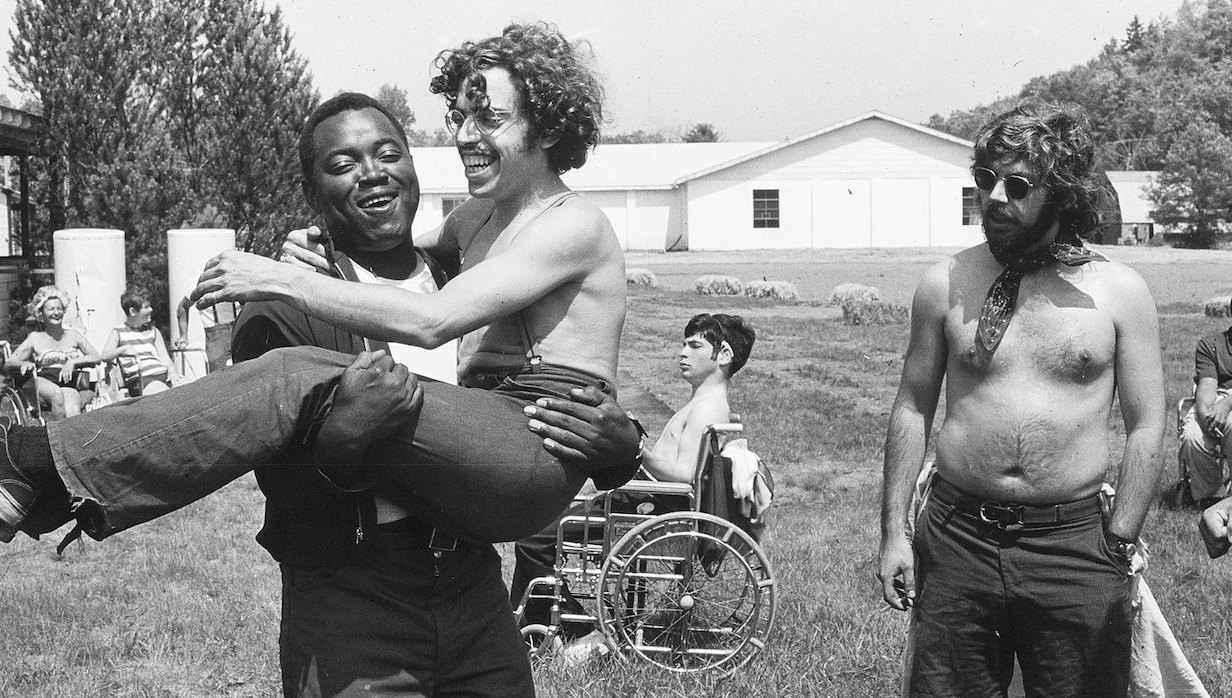 Back to selection
Back to selection
“Wheelchairs, Crutches and Canes Take on New Shape and Meaning”: Nicole Newnham and Jim LeBrecht | Crip Camp
 A still from Crip Camp by Nicole Newnham and Jim LeBrecht (courtesy Sundance Institute)
A still from Crip Camp by Nicole Newnham and Jim LeBrecht (courtesy Sundance Institute) Whether capturing or creating a world, the objects onscreen tell as much of a story as the people within it. Whether sourced or accidental, insert shot or background detail, what prop or piece of set decoration do you find particularly integral to your film? What story does it tell?
The props—or tools—of the everyday lives of people with disabilities are part of the fabric of Crip Camp, present in every scene of the band of campers-turned-friends that our film traces through the 1970’s. In Crip Camp, wheelchairs, crutches and canes take on new shape and meaning: campers aren’t “wheelchair bound” or “confined to a wheelchair,” but out of their chairs, swimming, lounging and having make-out sessions in the grass. A blind leader’s cane becomes a staff that she bangs on a table to rally activists during a protest. A punk performance artist uses his chair as part of a burlesque act, strutting on stage in his wheelchair in a bikini bottom. The sounds of wheelchairs, often not present in films, is ever present—the rattle of manual chairs at Camp Jened shifts to the liberating whoosh of power chairs as our characters move to Berkeley and become part of the Independent Living Movement. These are the joyous sounds of the coming together of a diverse group of disabled people with a common cause: to secure the civil rights afforded other Americans, and obtain a life of their choosing.
